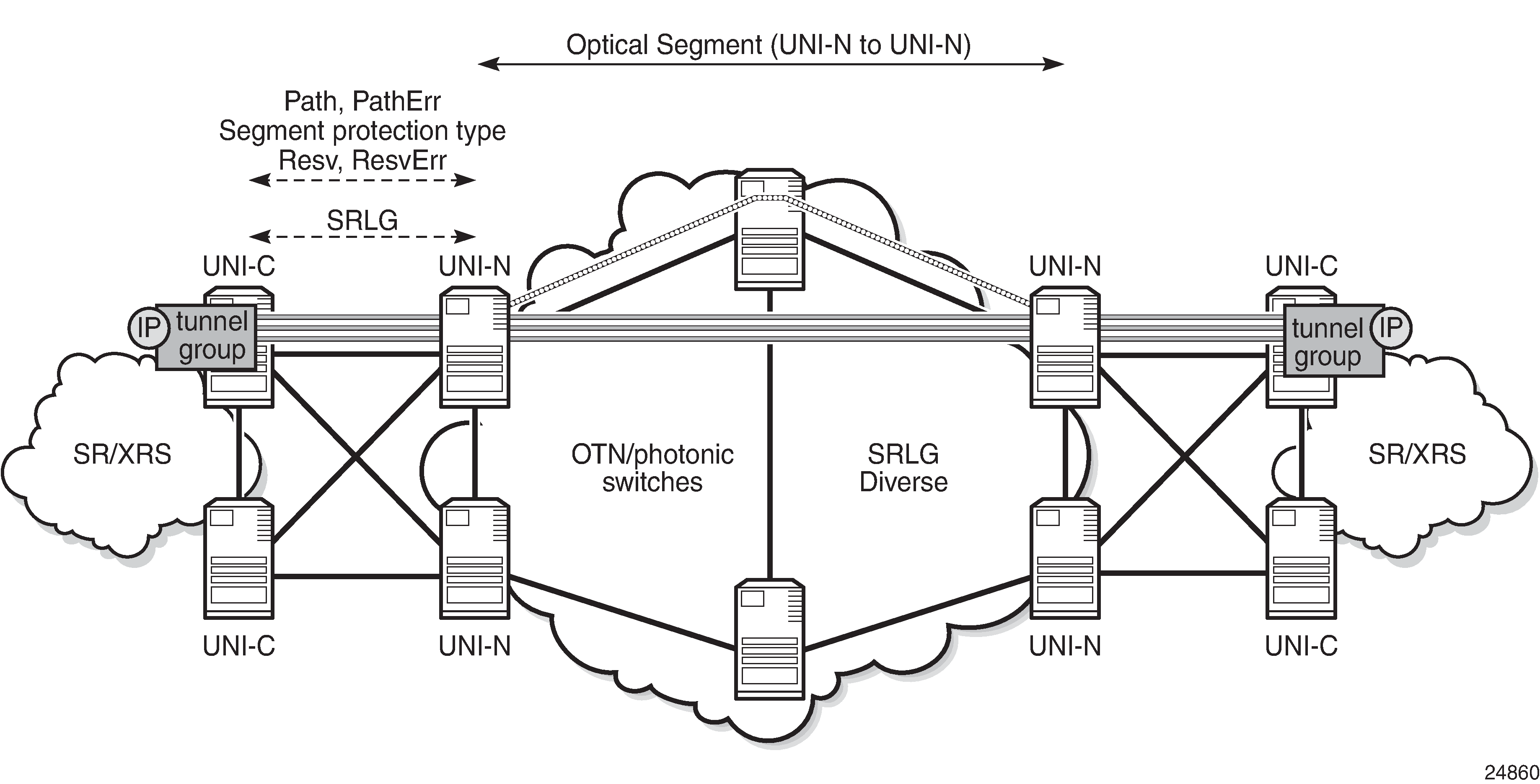Optical segment protection refers to the ability of the optical network to protect the span of a gLSP between ingress and egress UNI-N nodes. It does not require any protection switching on the UNI-C nodes. However, it does require the UNI-C to signal a request for a particular segment protection type toward the UNI-N in the PATH message for a gLSP. The optical network may either accept this request, reject it or respond with an alternative. Segment protection is defined in RFC 4873.

Signaling of the following segment protection types is supported by the 7750 SR and 7950 XRS:
Unprotected — The path is not protected against failure.
Source-Based Reroute (SBR) — In this mechanism (also known as Full Rerouting), a path is restored after a failure, but the success of restoration depends on the available resources. This can reroute traffic in 200 ms or more.
Guaranteed Restoration (GR) — A shared backup is assigned to the path, and recovery resources are reserved. If they cannot be reserved on a shared path, then this falls back to SBR. This can reroute traffic in 50 ms or less. This mechanism is also known as 1+shared standby. This is also known as Rerouting without extra traffic, or shared mesh restoration.
Sub-network Connection Protection (SNCP) — This provides 50 ms protection in the case of a single failure. This is also known as 1+1 bidirectional path protection.
Path Restoration Combined (PRC) — This provides 50 ms protection, even in the case of multiple failures. This is also known as SNCP with SBR.